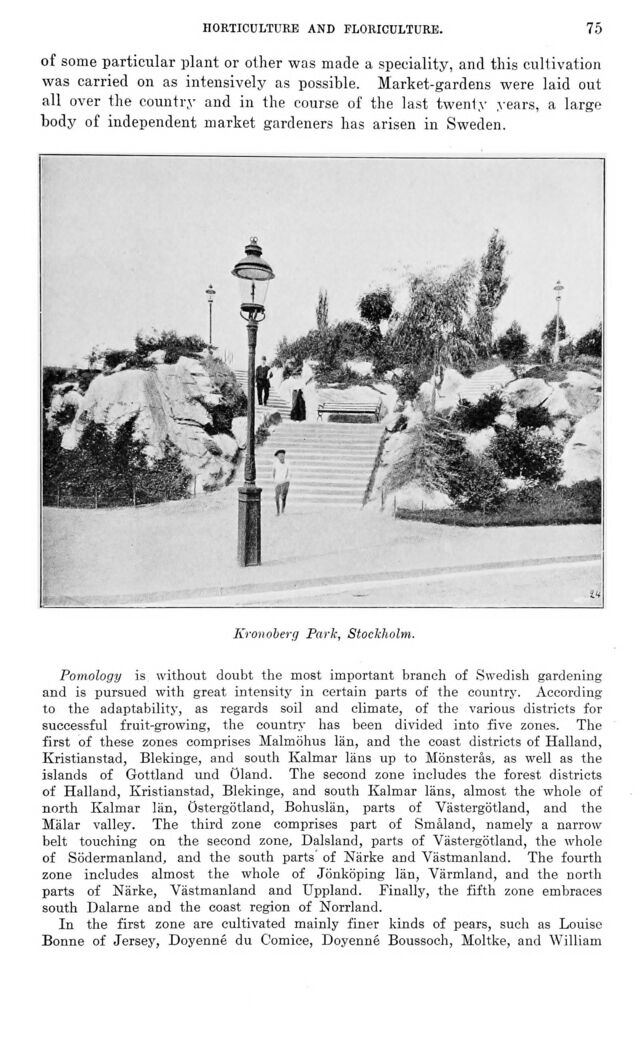
Full resolution (JPEG) - On this page / på denna sida - III. Rural Husbandry. Introd. by H. Juhlin Dannfelt - 1. Agriculture. By H. Juhlin Dannfelt - Horticulture and Floriculture. By G. Lind

<< prev. page << föreg. sida << >> nästa sida >> next page >>
Below is the raw OCR text
from the above scanned image.
Do you see an error? Proofread the page now!
Här nedan syns maskintolkade texten från faksimilbilden ovan.
Ser du något fel? Korrekturläs sidan nu!
This page has never been proofread. / Denna sida har aldrig korrekturlästs.
horticulture and floriculture. 75
of some particular plant or other was made a speciality, and tliis cultivation
was carried on as intensively as possible. Market-gardens were laid out
all over the country and in the course of the last twenty years, a large
body of independent market gardeners has arisen in Sweden.
Kronoberg Park, Stockholm.
Pomology is without doubt the most important branch of Swedish gardening
and is pursued with great intensity in certain parts of the country. According
to the adaptability, as regards soil and climate, of the various districts for
successful fruit-growing, the country has been divided into five zones. The
first of these zones comprises Malmöhus län, and the coast districts of Halland,
Kristianstad, Blekinge, and south Kalmar läns up to Mönsterås, as well as the
islands of Gottland und Öland. The second zone includes the forest districts
of Halland, Kristianstad, Blekinge, and south Kalmar läns, almost the whole of
north Kalmar län, Östergötland, Bohuslän, parts of Västergötland, and the
Mälar valley. The third zone comprises part of Småland, namely a narrow
belt touching on the second zone, Dalsland, parts of Västergötland, the whole
of Södermanland, and the south parts of Närke and Västmanland. The fourth
zone includes almost the whole of Jönköping län, Värmland, and the north
parts of Närke, Västmanland and Uppland. Finally, the fifth zone embraces
south Dalarne and the coast region of Norrland.
In the first zone are cultivated mainly finer kinds of pears, such as Louise
Bonne of Jersey, Doyenné du Cornice, Doyenné Boussoch, Moltke, and William
<< prev. page << föreg. sida << >> nästa sida >> next page >>